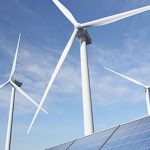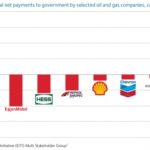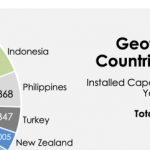Green ammonia uses renewable energy instead of natural gas or coal for producing hydrogen; hence, is an effective way to reduce greenhouse emissions. The electrochemical Haber-Bosch process produces ammonia without any greenhouse emissions. Green ammonia refers to ammonia, which has been produced through a process that is 100% renewable and carbon-free. Reducing the carbon dioxide emissions during the production process is essential to achieve … [Read more...]
UK oil & gas keeps rising. Clean Energy blueprint can reverse it
In the UK the £2.3bn (=$2.9bn / €2.6bn) in new oil and gas subsidies introduced since 2014 will state-fund the addition of twice as much carbon as its coal phaseout saves, says a new report “Sea Change: Climate Emergency, Jobs and Managing the Phase-out of UK Oil and Gas Extraction”. Can the UK call itself a climate leader if its existing policies push it over its emissions limits? It can, if you consider this: the UK took 16 years to become the … [Read more...]
Grid Asset Management 2019
Grid Asset Management 2019 Data-Driven Asset Management to Support Smart Investment Planning and Optimised Lifecycle Management 3-Day Conference, Exhibition & Networking Forum 14-16 May 2019, London Drawing together 120+ smart grid asset management professionals, this 3-day case-study driven programme provides an intensive review of 14+ next generation asset management digitalisation programmes. As regulatory pressures and smart … [Read more...]
EXCLUSIVE: Geothermal could represent a far bigger share of renewables
The IEA says geothermal energy could account for only 3.5% of annual global electricity production and 3.9% of energy for heat (excluding ground source heat pumps) by 2050. But is this down to short term thinking? Geothermal could make a much bigger contribution to renewables, provided it is put onto the fast track like wind and solar, says Alexander Richter, President of the International Geothermal Association. … [Read more...]
The risks related to onshore wind power investment
Bans on subsidies (in some countries) and reduced costs have hit total investment in onshore wind. Meanwhile, market share continues to grow across the EU28. Wind energy now accounts for almost 20% of installed capacity for power generation which makes researcher Schalk Cloete's sobering analysis of risks for onshore wind well worth reading. Following up on his previous article, he examines current assumptions and argues that the discount rate … [Read more...]






